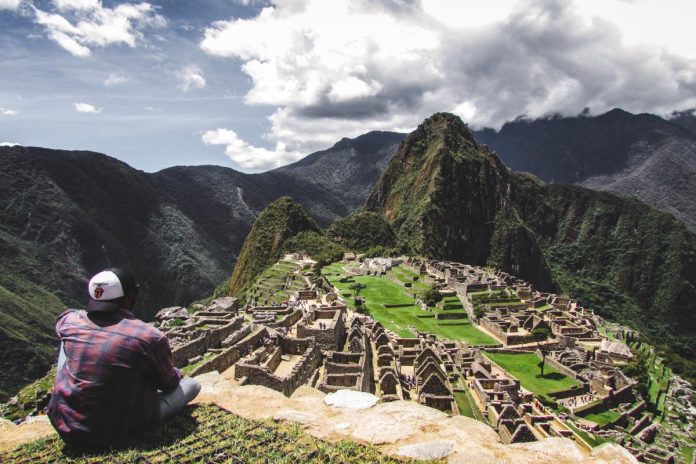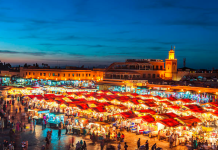Skift Take
The civil unrest has delivered a serious blow to the recovery of Peru’s tourism sector. Tourism officials need to counter the negative publicity — especially around Machu Picchu — to reassure aspiring tourists of the country’s safety. They also need to nudge government officials to resolve the crisis.
Peru’s post-pandemic recovery will take longer than expected because of the violent political protests that started in December. As the protests continue, the country’s competitiveness as a tourist destination is at risk if the political situation isn’t resolved and images of unrest and chaos stay in the international spotlight.
Peru is off to a bad start in 2023. Up to 60 percent of travel bookings for the first half of the year have been canceled since the protests began in December, according to Reuters. Train service to Machu Picchu, the country’s most popular tourist attraction, has had repeated closures due to the protests. On January 4, thousands of protesters marched on Lima, Peru’s capital.
The South American country has been grappling with a destructive political crisis. On December 7, left-wing President Pedro Castillo was impeached and arrested after he attempted to dissolve the country’s national legislative body and set up an emergency government. Castillo’s vice president, Dina Boluarte, was sworn in as the new president on the same day.
In the following week, large-scale violent demonstrations over Castillo’s removal broke out across the country, with protesters demanding new general elections, Boluarte’s resignation, Castillo’s release or Congress’s dissolution. Protestors blocked transportation networks and staged attacks on police stations, courthouses, factories and airports, according to the New York Times. The protests have resulted in 28 deaths and more than 600 injuries, according to infobae, which provides news centered on Latin America.
On December 14, the defense minister declared a nationwide state of emergency for 30 days, limiting some civil liberties like the right to assemble. Despite the declaration, protests continued to block roads, bridges and railways in many parts of the country. Five airports had to be temporarily closed due to the protestors.
The protests have disrupted daily life and the tourism sector, said Eduardo Nycander, founder of Rainforest Expeditions, which has offered tours and lodging in Peru for over 30 years. The disruptions caused nearly 1.8 million people across the country to stop their tourist activities, operations or travel plans, according to Peru’s National Chamber of Tourism.
One travel vlogger posted a TikTok viral video on December 18th of his trip through Peru to the Bolivian border. His video received nearly 11 million views.
The U.S. — a top inbound market for Peru — advised its citizens to reconsider travel to the country because of crime and civil unrest.
The unrest hits Peru as its tourism sector tries to make a comeback from the pandemic. The number of international arrivals to the country dropped from 5.3 million in 2019 to 1.1 million in 2020, according to the World Bank. International tourist expenditures dropped from $1.5 billion in 2019 to $938 million in 2020.
The pandemic especially devastated small tourism businesses, many of which didn’t qualify for government subsidies, according to Nycander. “The small ones died forever,” he said. “They couldn’t support two years of Covid.”
Adding more pain to the industry, protesters have targeted tourist hotspots to win international attention and undermine the government. One incident that made international headlines was the stranding of 300 American, European and Peruvian visitors at a town near Machu Picchu, Peru’s most popular tourist attraction, on December 16 after protests caused the closure of the local train line and roads. The tourists were evacuated by the government a few days later.
“Something like that can be very painful for tourism. That act was especially against tourism because tourism involves foreigners and was the way to attract attention,” said Nycander. Global news outlets BBC, CNN, The Guardian, NBC News, USA Today and Fox News covered the Machu Picchu situation, keeping it in the minds of millions of people.
The Machu Picchu incident made aspiring tourists nervous enough to cancel their bookings. Some canceled because their itinerary would be ruined without the attraction. “Absolutely anything that’s around ‘My experience could be compromised at Machu Picchu’ is not good for business because almost every person will include Machu Picchu in their itinerary, ” said Kelly Torrens, vice president of product for Kensington Tours
The December protests cost Peru an estimated $450 million of tourism income, said National Chamber of Tourism of Peru Executive Director Tito Alegría on Radio Programas del Perú.
Large scale civil disobedience isn’t new to Peru, but what made this recent wave more impactful was the violence and the subsequent media attention around it, according to Torrens. “Peru as a country experiences a lot of strikes and disruption on an annual basis that don’t make the news,” she said.
While the violence has dissipated but the civil unrest and the media attention has not. Heading into 2023, the worry is that the images of Peru’s civil unrest will stay in the international media spotlight, said Torrens. The protesters could very well repeat another incident like they did with Machu Picchu to get attention.
Peru’s tourism officials told Reuters they will work with tour operators to restore tourist interest.













